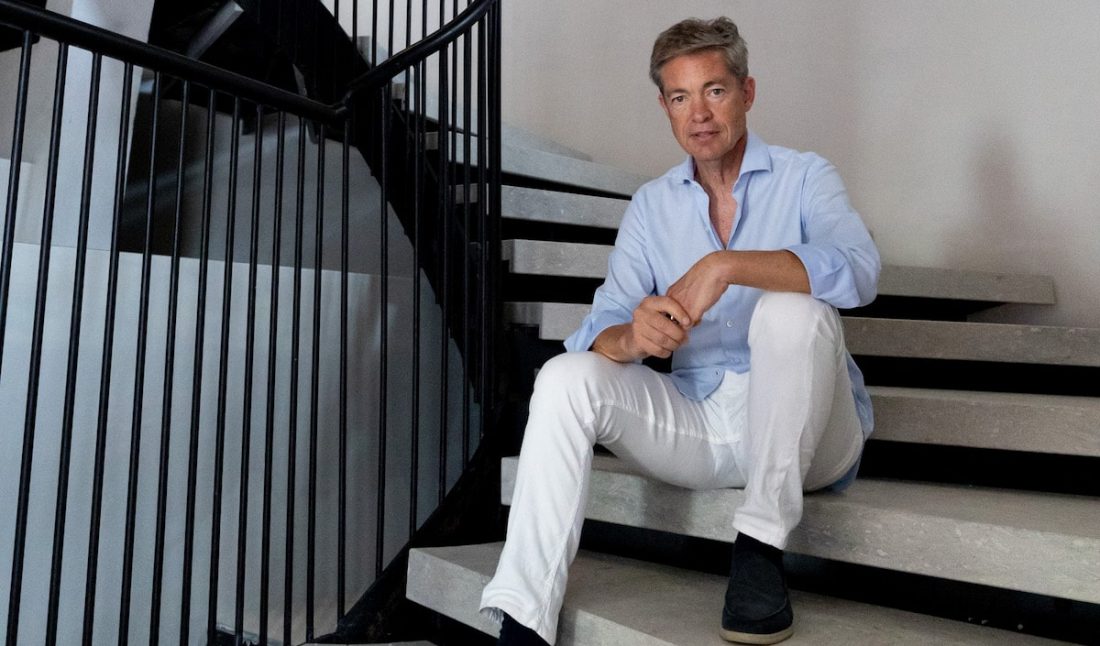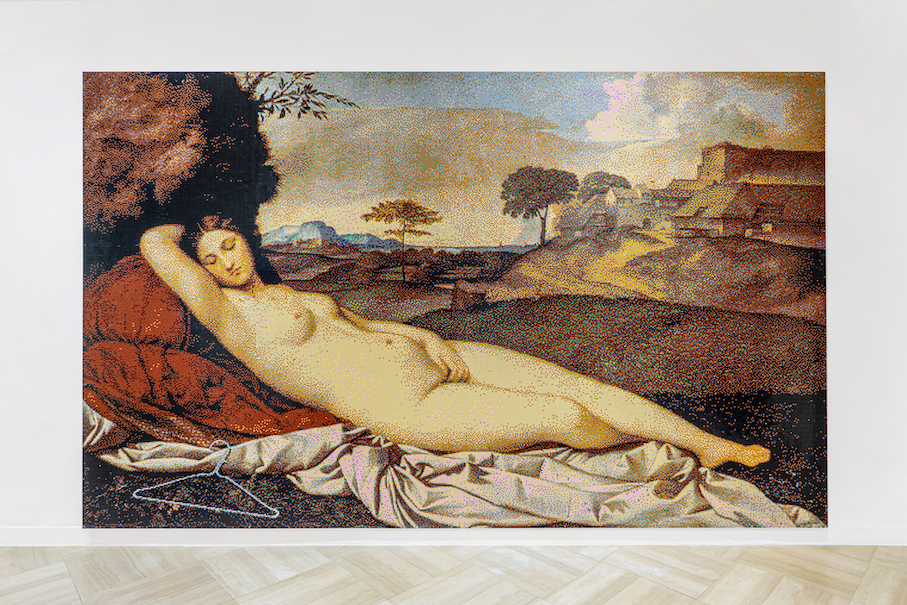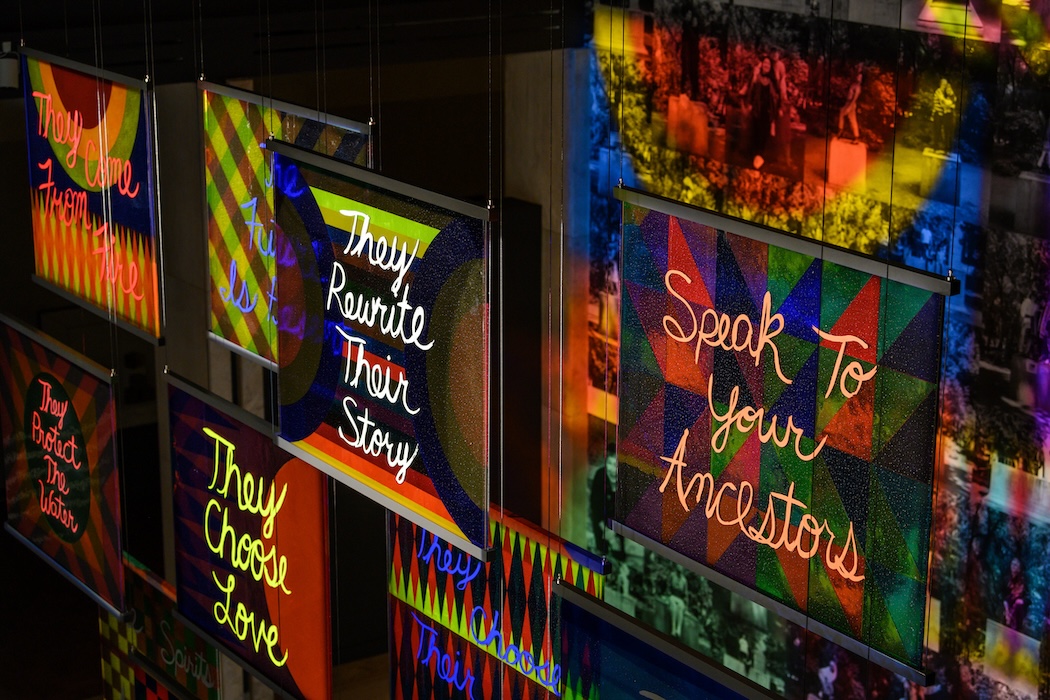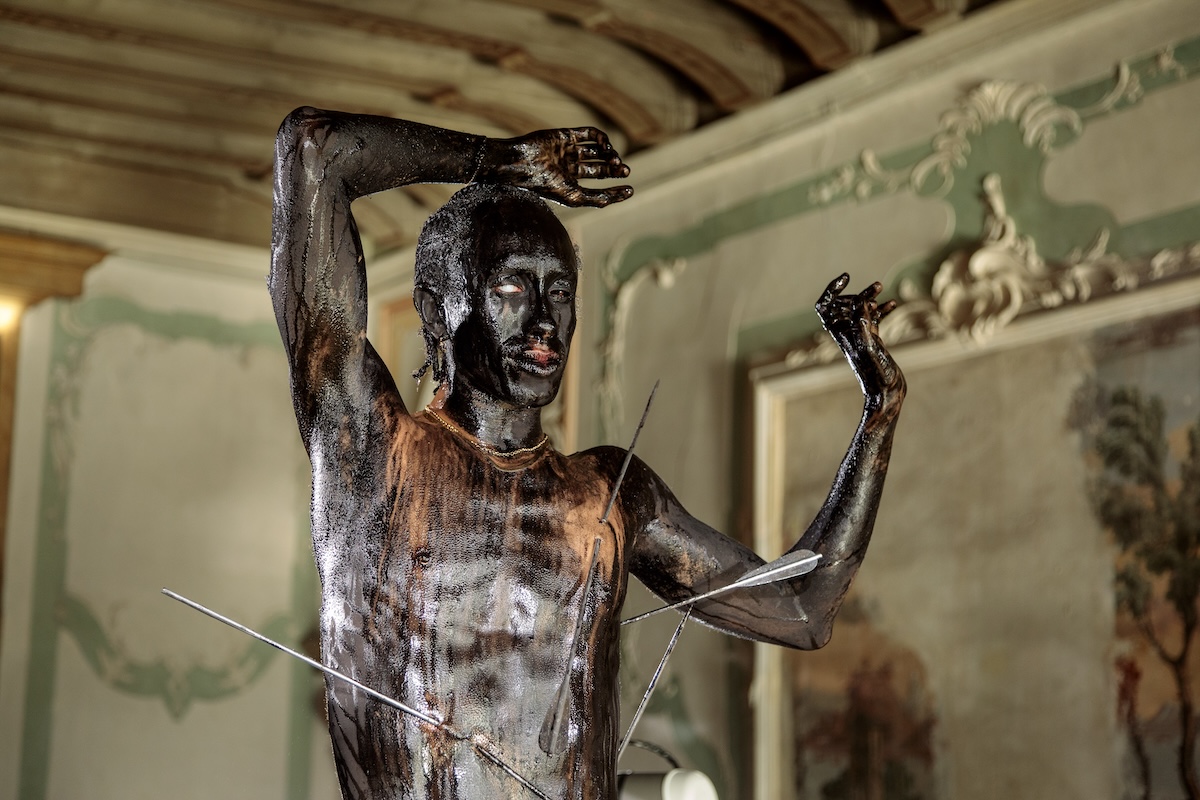It is a sunny, beautiful afternoon in London as we meet at Claridge’s for an enlightening interview with Nicolas Berggruen, a distinguished global business leader, influential thinker, and philanthropist renowned for his profound contributions to art, society, and culture. He is in London for a series of important meetings, including a lunch with Emperor Naruhito of Japan, a revered ceremonial and heavenly sovereign. Our conversation delves into the significance of this role, reflecting on the elaborate tapestry of global cultures. Nicolas underscores that cultural exchanges are not merely symbolic but hold the potential to cultivate deep mutual understanding and drive societal progress. We also touch upon his forthcoming engagements at Oxford and Cambridge, sparking a light-hearted moment as we acknowledge the historic rivalry between these venerable institutions.
Recently returned from Venice, Nicolas hosted seminal discussions on Universalism with the Berggruen Institute at Palazzo Diedo, led by the eminent Hans Ulrich Obrist. This event brought together prominent thinkers, artists, and philosophers from around the globe for intense dialogue on the legitimacy of civilizational values and universal truths in a post-globalization, post-Eurocentric, and post-liberal world. Venice, with its storied history as a nexus of cultural exchange and artistic innovation, provided an ideal setting for such insightful intellectual engagement. Today, where the threat of climate change is visceral, Venice is also a perfect site for planetary thinking.
“The key reason why we are in Venice is because there is a long tradition of arts and culture, a crossroads of different traditions”, Nicolas explains. “I decided to establish the third center for the Institute beyond Los Angeles and Beijing in Venice. The idea was to be in a place that is more neutral—not America, not China—but really a world site. Venice has always been that. The fact that we can do our Institute work there, the intellectual work, and mix it with art and culture, with living and creative artists, was one of our aims. And frankly, it is happening.”
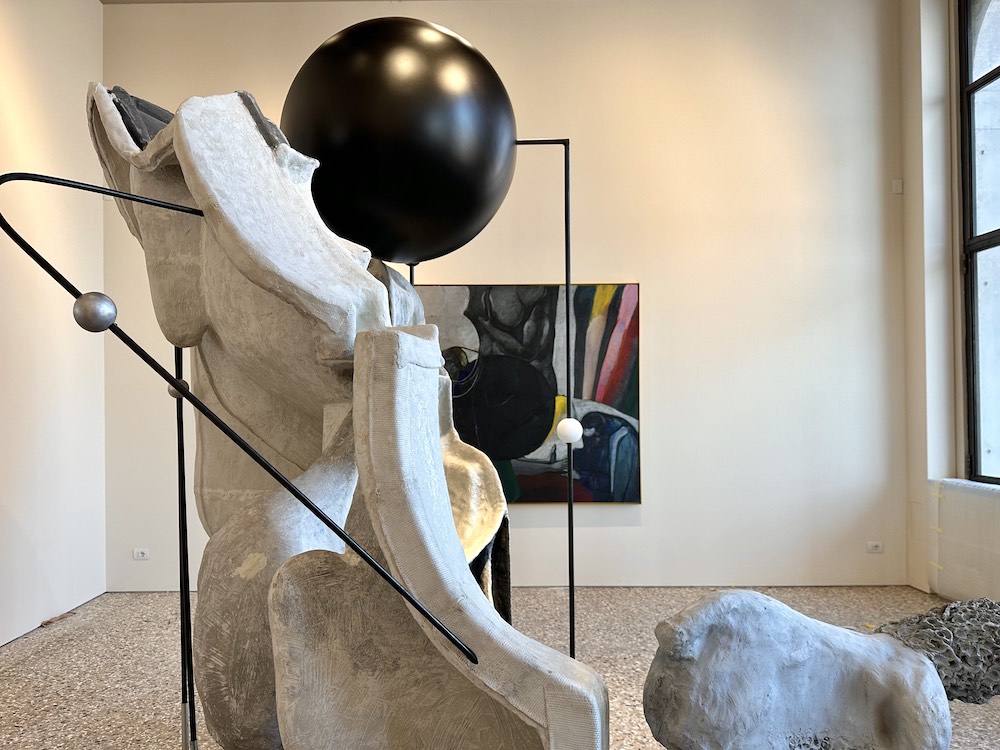 Liu Wei, “Speculation N. 2,” 2024. Photo by Massimo Pistore. © Liu Wei, Lehmann Maupin New York, Seoul, London and Berggruen Arts & Culture: Palazzo Diedo.
Liu Wei, “Speculation N. 2,” 2024. Photo by Massimo Pistore. © Liu Wei, Lehmann Maupin New York, Seoul, London and Berggruen Arts & Culture: Palazzo Diedo.
Berggruen Institute Radiates with New, Forward-Thinking Endeavors
In 2021, Nicolas Berggruen acquired Casa dei Tre Oci in Venice, designating it as the European center of the Berggruen Institute—a hub for global dialogue and intellectual exchange, presenting an international series of summits, workshops, symposia, and exhibitions. The Institute’s mission is to cultivate foundational ideas and reform political, economic, and social systems for the 21st century. By integrating various disciplines and encouraging cross-cultural discourse, the Institute aims to convene some of the brightest minds to explore fundamental questions of our time, thereby making a powerful impact on the progress and direction of global societies. Since its inception, the Berggruen Institute has launched programs that have developed a youth employment strategy for Europe, facilitated a more open and constructive communication between Chinese leadership and the West, and enhanced the ballot initiative process in California. Additionally, the Institute has inaugurated Noema, a publication that brings together global thought leaders to exchange ideas. The Berggruen Prize, a $1 million award, is annually bestowed by an independent jury to a thinker whose contributions have significantly advanced human self-understanding and progress in an evolving world.
Part of the Berggruen Institute, Berggruen Arts & Culture is a charitable foundation established in 2020 and based at Palazzo Diedo. Its goal is to deepen the connection between contemporary art and historical traditions, as well as promote dialogue between East and West. The foundation hosts artist residencies, exhibitions, events, and performances. During the 60th International Art Exhibition – La Biennale di Venezia in 2024, the foundation presented “Janus” at Palazzo Diedo, featuring site-specific interventions by internationally acclaimed artists inspired by traditional Venetian crafts. The exposition, named after the Roman god Janus, symbolizes the blending of historical and contemporary perspectives.
Nicolas Berggruen’s International Influence Uplifts Artistic Expression
Berggruen’s influence extends beyond his projects with Berggruen Arts & Culture and the Berggruen Institute. He serves on the boards of several prestigious museums and cultural organizations, reflecting his unwavering commitment to advancing artistic endeavors and fostering global cultural dialogue. He is a trustee of the Los Angeles County Museum of Art (LACMA) and is involved with the Museum Berggruen in Berlin, which houses his family’s collection of modern masterpieces. Additionally, he contributes to the Metropolitan Museum of Art in New York and the Solomon R. Guggenheim Foundation, championing initiatives that push the boundaries of artistic expression and cross-cultural understanding.
Nicolas’s philanthropic work emphasizes the transformative power of thought and the arts in shaping a brighter future. As he eloquently states, “Arts and culture offer us new narratives for a better world.” Through his initiatives, Nicolas seeks to inspire a deeper understanding of our shared humanity and the potential for positive change. To explore his foundational influences and perspectives on art and culture, I asked him about his early artistic inspirations, initial experiences with collecting art, and vision for the enduring legacy of his work.
WHITEWALL: How did your early experiences and influences shape your approach to art collecting? Are there specific art periods or movements that resonate with you the most, and why?
NICOLAS BERGGRUEN: Art is fundamentally a personal experience because it is, by its very nature, an experience. And experiences are inherently individual. Art is not something purely quantifiable or purely definable—it is really an intersection of us humans and the imagination. It allows you, as a consumer of art, as a witness to something artistic, to experience it in a very personal way. So when I think of art, it is about anyone who interacts with it through their own unique way, and mine was rooted in curiosity. Some people are curious, and some are not, and I was curious. Growing up in a family that valued and immersed itself in art, surrounded by artists, made this inclination feel natural.
In my case, as a little boy and as an adolescent, I was very interested, not in contemporary art, but mostly in the Italian Renaissance. This period, with its artistic and cultural achievements, captivated me. I had the chance to travel, including to Venice, and see great cities and places that allowed artists to create. My early experience involved seeing art not so much in museums, but in places that were more permanent, like churches and palaces, where they were meant to be forever, like in Venice. Witnessing art in its authentic context—where it was created to be lived with and appreciated in everyday settings—had a lasting impact on me. It illuminated the historical and cultural significance of art and how it dialogues with its surroundings, creating a timeless connection between the past and the present.
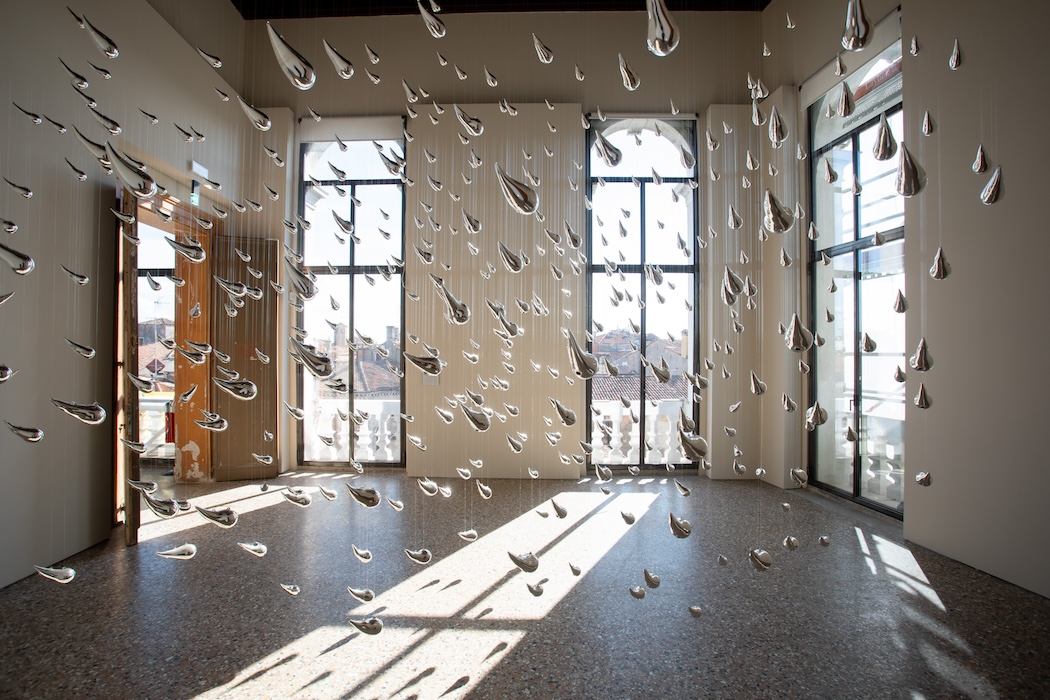 Urs Fischer, “Omen”, 2024. Palazzo Diedo. Photo: Massimo Pistore. Courtesy of Berggruen Arts & Culture.
Urs Fischer, “Omen”, 2024. Palazzo Diedo. Photo: Massimo Pistore. Courtesy of Berggruen Arts & Culture.
WW: Reflecting on your early days of collecting, what were the first pieces or movements that drew you in? How has your approach to collecting evolved over the years?
NB: Honestly, I never, and still do not, consider myself a collector. It’s a nice title, but it feels a bit pretentious to me. I see myself more as a fortunate participant in the art world, someone who can occasionally acquire certain pieces. Their destiny will be well beyond me. I am just a temporary custodian or a temporary shepherd looking after them. I never had the ambition to create a cohesive collection, but I did gravitate towards certain artists.
The first artists I collected, back in my 30s, were well-known but not yet celebrated or expensive. Andy Warhol and Jean-Michel Basquiat were among the first. I was living in New York, and I really loved their work. Great pieces were available, and I was lucky to be able to purchase them. That was the beginning. Over time, and now living in Los Angeles, my focus has shifted. I am much more interested in living artists who are producing work today. Los Angeles is abundant with artistic talent, so I have been able to acquire pieces from contemporary artists. Additionally, there are many significant but perhaps under-recognized deceased artists from Los Angeles whose work I have also collected. In essence, my approach to art has always been guided by genuine curiosity and an appreciation for the creative process. Whether acquiring works from established figures or discovering contemporary talents in Los Angeles, I remain committed to appreciating art’s depth and supporting its creators.
“Witnessing art in its authentic context—where it was created to be lived with and appreciated in everyday settings—had a lasting impact on me,”
Nicolas Berggruen
WW: How important has it been for you to maintain relationships with the artists whose work you collect? Can you share any particular stories or experiences that stand out in this regard?
NB: Personal and exciting experiences with artists have been immensely important to me. Artists, through their imagination and research, possess rich internal lives both intellectually and emotionally. Their ability to express these inner worlds through art is unique to their craft. This constant act of creation means that artists have much to teach us about life and the human condition.
I am deeply interested in artists not just for their work, but for their perspectives on the world. Engaging in dialogues with them has been greatly enlightening. For instance, I have been fortunate to build relationships with several artists through luck, chance, or design. These interactions are not always centered on their art; rather, they often revolve around intellectual exchange and learning. Some artists have profoundly influenced me, offering insights that extend beyond their artistic creations. For example, Urs Fischer, who now resides primarily in Los Angeles, is someone I consider to be one of the most thoughtful and intellectually creative artists. Our conversations are always stimulating and thought-provoking, and I learn something new each time we speak. These dialogues have been paramount, providing me with perspectives that continue to shape my understanding of art and the world.
Of course, not all artists are as vocal or expressive in conversation; some communicate more vividly through their work. Interactions with these artists can be less verbally stimulating but equally enriching in understanding their creative expression. It mirrors human relationships in general—each one offers a unique form of engagement and learning.
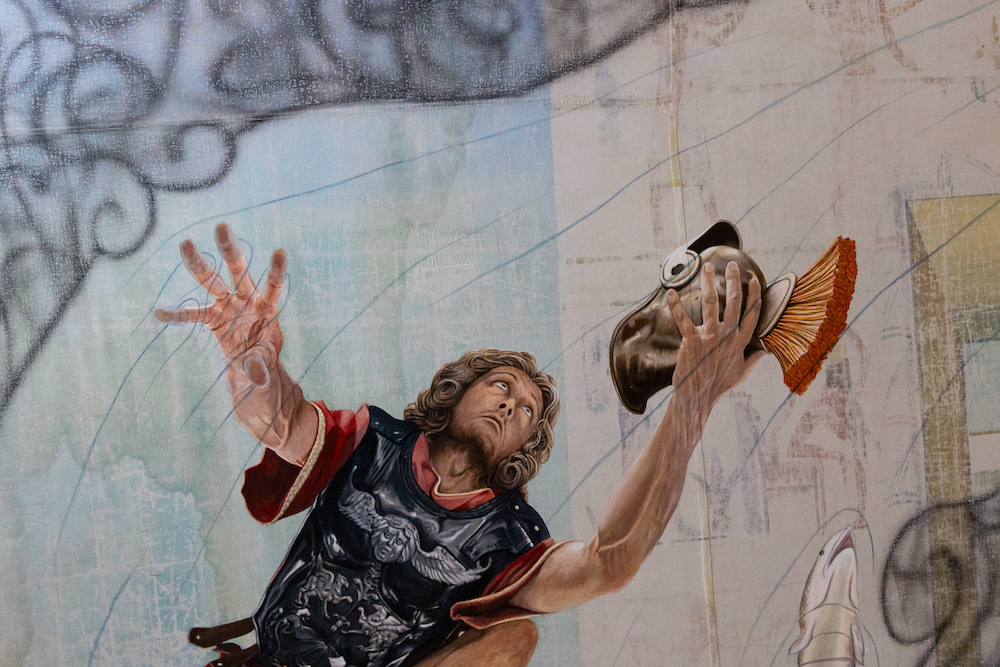 Jim Shaw, “The Alexander Romances”, 2024. Photo by Massimo Pistore. © Jim Shaw Studio and Berggruen Arts & Culture: Palazzo Diedo.
Jim Shaw, “The Alexander Romances”, 2024. Photo by Massimo Pistore. © Jim Shaw Studio and Berggruen Arts & Culture: Palazzo Diedo.
WW: Following the grand opening of Palazzo Diedo in Venice, what were your thoughts and feelings about seeing the impact of your vision and collection on such a scale and with such an audience? How did the event meet or exceed your expectations?
NB: It’s still early days for Palazzo Diedo. The transformation of this 18th-century building into a vibrant art space has been quite a journey. The palazzo itself is remarkable, with its expansive and light-filled rooms. Our vision is to make Venice not just a showcase for art but a hub of creativity and production, reminiscent of its historical roots. We aim to invite artists to live and create in Venice, making it a place of artistic innovation once again.
While the residential part of our program is still under construction, we’ve already begun to see our vision take shape. We’ve invited artists to create works in the areas that are currently accessible, and their contributions have been extraordinary. Palazzo Diedo, with its beautiful and generous rooms, some of which retain their Renaissance painted ceilings, has provided an inspiring environment. These works are intended to be there forever, much like the Renaissance frescoes. We hope they will remain there as long as Venice exists.
As previously mentioned, we’ve had the privilege of hosting incredible artists such as Urs Fischer, Piero Golia, Carsten Höller, Ibrahim Mahama, Mariko Mori, Aya Takano, Hiroshi Sugimoto, Lee Ufan, Jim Shaw, Sterling Ruby, and Liu Wei. Recently, we’ve added exciting installations like a fantastic staircase by Carsten Höller and magnificent lamps by Sterling Ruby, a nod to the Venetian tradition of decorative lighting in palazzos. Each artist has contributed unique pieces that enliven the palazzo’s historic beauty and contemporary relevance.
This is just the beginning. We have assembled a remarkable group of artists whose works are now integral to Palazzo Diedo. Over the next two years, we will focus on intellectual and cultural programs related to the Berggruen Institute, setting the stage for when our residential spaces are ready. Once the artist-in-residence program starts, we hope to attract talented artists to live and work in Venice, continuing to build on this creative legacy. This next phase will truly bring our vision to life, fostering a dynamic environment where art and thought converge.
“Our vision is to make Venice not just a showcase for art but a hub of creativity and production, reminiscent of its historical roots,”
Nicolas Berggruen
WW: You have often emphasized the connection between art, philosophy, and society. Could you please elaborate on how these domains intersect and inform each other in your vision and work?
NB: At the Berggruen Institute, we blend various disciplines and cultures to deepen our understanding of human and existential questions. From the start, we’ve engaged with both Western and non-Western perspectives, establishing centers in China and America, transcending national boundaries. Venice, a meta city, symbolizes a crossroads of traditions and ideas, and we may expand to other locations in the future. We believe complex subjects are best explored through a multidisciplinary lens, bringing together philosophers, artists, technologists, policymakers, economists, and scientists to foster dialogue. This convergence of diverse perspectives is intentional.
Venice uniquely houses both the Berggruen Institute at Casa dei Tre Oci and the Arts & Culture Program at Palazzo Diedo, allowing these entities to interact and enrich each other. For example, last week, we hosted workshops at Tre Oci with thinkers and artists, followed by discussions and public events at Palazzo Diedo. The idea is that isolated disciplines are less stimulating than when they intersect. By breaking down silos, we create an environment where diverse viewpoints converge, hopefully leading to innovative and comprehensive discoveries. This interplay between art, philosophy, and society drives us to explore and understand the multifaceted nature of human existence.
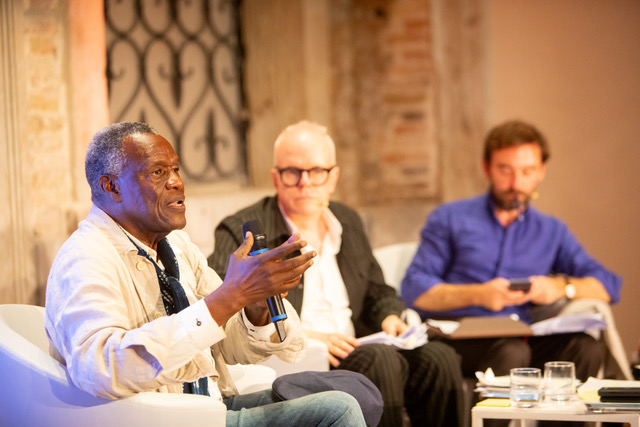 “What Is Universalism?”, 2024. Palazzo Diedo. Photo: Massimo Pistore. Courtesy of Berggruen Arts & Culture.
“What Is Universalism?”, 2024. Palazzo Diedo. Photo: Massimo Pistore. Courtesy of Berggruen Arts & Culture.
WW: The Berggruen Institute, along with its magazine Noema, aims to reshape political and social institutions through interdisciplinary and cross-cultural initiatives. How do you see the role of art and culture in achieving this mission, and which recent projects or articles do you believe have had the most significant impact on addressing global challenges?
NB: I think any subject we tackle—democratic reforms, capitalism reforms, or East-West relations, particularly between the West and China—benefits immensely from the inclusion of art and culture. When exploring transformative technologies like gene editing, AI, and quantum computing, we typically engage with academics, policymakers, and technologists. These professionals offer crucial insights into how such technologies affect our humanity.
However, artists bring a unique perspective, posing different questions and exploring themes others might overlook. For instance, artists often engage with the boundaries and interactions between humans and nature or between the natural and the artificial. We’ve collaborated with several remarkable artists who delve into these themes.
For example, we have worked with Pierre Huyghe, who has an extraordinary exhibition in Venice at the Pinault Collection, “Punta della Dogana.” It’s a must-see show. Additionally, we’ve worked with Ian Cheng, Anicka Yi, and Agnieszka Kurant. These artists are renowned but are particularly interested in humans as participants in a larger world—not as isolated entities or the sole protagonists of our universe. They explore the interplay between the natural and the synthetic, and how what we consider artificial is often an extension of ourselves.
Their work prompts us to consider how we relate to nature and artificial constructs, providing new lenses through which to view these relationships. By involving artists who understand and care about these issues, we gain broader, more nuanced understandings of the questions that concern us. Art and culture, play an indispensable role in our mission, offering innovative perspectives and fostering deeper engagement with the global challenges we aim to address.
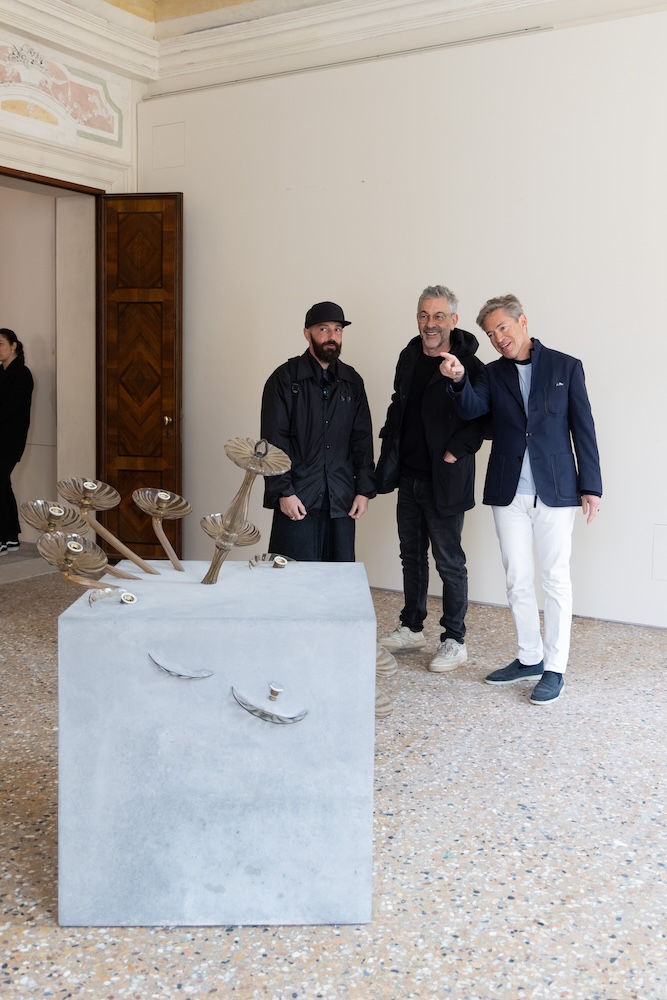 Piero Golia, Pierre Huyghe, Nicolas Berggruen, 2024. Palazzo Diedo. Photo: Massimo Pistore. Courtesy of Berggruen Arts & Culture.
Piero Golia, Pierre Huyghe, Nicolas Berggruen, 2024. Palazzo Diedo. Photo: Massimo Pistore. Courtesy of Berggruen Arts & Culture.
“This interplay between art, philosophy, and society drives us to explore and understand the multifaceted nature of human existence,”
Nicolas Berggruen
WW: With the establishment of Berggruen Arts & Culture and the inauguration of Palazzo Diedo, what are your long-term aspirations for these cultural hubs, and how do you envision them impacting the local and global art scene?
NB: We are one of many actors in the world of art and culture, as well as in the realm of ideas. Our approach lies in mixing these two worlds to foster ideas and creations that might not exist otherwise. By integrating art and intellectual thought, we hope to contribute meaningfully to both fields. Our aim is to engage with living artists and thinkers, empowering them to take creative risks and explore new territories. This willingness to take risks may lead to the production of work that is not only useful and provocative but also transformative. This experimental nature is central to our mission at the institute, allowing us to adopt a long-term perspective and embrace uncertainty as a path to innovation. What sets us apart is our position in a neutral space, distinct from traditional institutions such as universities, museums, commercial galleries, or government bodies. This “third space” offers an environment where creativity and intellectual inquiry can flourish without the constraints typically imposed by more conventional settings. It is this neutrality that enables us to experiment freely and see where these explorations might lead.
WW: You’ve mentioned that art has the power to animate change and rebuild society. Could you please share examples of how you have seen this in action, either through your personal experiences or through the initiatives you support?
NB: Artists have always, in some cases, been interpreters or translators of what is happening in society. They do not merely mirror society as it is; rather, they present a distorted reflection of current events. They serve as both chroniclers of history and conduits of imagination. Because of these dual roles, artists have historically depicted what society might become, offering interpretations that are both reflective and visionary. They become witnesses to history, culture, and societal change over time. Unlike a purely aesthetic or reflective form, artists reimagine and reinterpret realities. Through their work, they provide a greater understanding of society and facilitate self-reflection.
For example, if one seeks to comprehend Chinese society, examining Chinese art reveals profound insights. Similarly, contemporary Western art reflects our current self-perception – it is vibrant yet often disturbed. It accentuates areas of comfort and discomfort, aspirations, fears, and hopes. Part of the mission of art is to provoke introspection. Today, art reveals where society is comfortable, where it is uneasy, what it longs for, fears, and hopes. It serves as an exceedingly informative medium for examining ourselves.
“This willingness to take risks may lead to the production of work that is not only useful and provocative but also transformative,”
Nicolas Berggruen
WW: How have your philosophical interests, particularly in Eastern philosophies and thinkers like Confucius, Lao Tzu, and the Buddha, shaped your approach to both art collecting and philanthropy?
NB: Having grown up in the West, specifically in Paris, and having lived in America for a long time, I now reside in Los Angeles. My environment has predominantly been Western, but I have fortunately developed interest in non-Western philosophies. I began by reading Confucius and Lao Tzu and exploring teachings influenced by the Buddha. Currently, I am particularly intrigued by Indian philosophy.
I believe that regardless of their origins, humans share a fundamental curiosity about the world and themselves—questions about their identity, origins, and potential futures. Examining these questions through diverse cultural lenses is exceptionally rewarding. The Western, Socratic method of seeking a singular truth is noble, yet somewhat limited. In contrast, Asian philosophies offer a more expansive and infinite perspective, which is both enlightening and liberating. This synthesis of Western and non-Western thought has profoundly educated me, and I believe it can invigorate both traditions. When addressing contemporary issues like AI, the Western approach provides one perspective, but non-Western viewpoints offer equally valuable insights. Sometimes, what seems threatening from one cultural perspective may appear less so from another, and vice versa.
For me, whether one approaches the world from India, China, or the West, viewing it through another culture’s lens offers invaluable knowledge. These cross-cultural viewpoints illuminate aspects that might otherwise be overlooked, improving our understanding and fostering a deeper appreciation for the diverse ways in which different cultures perceive the world.
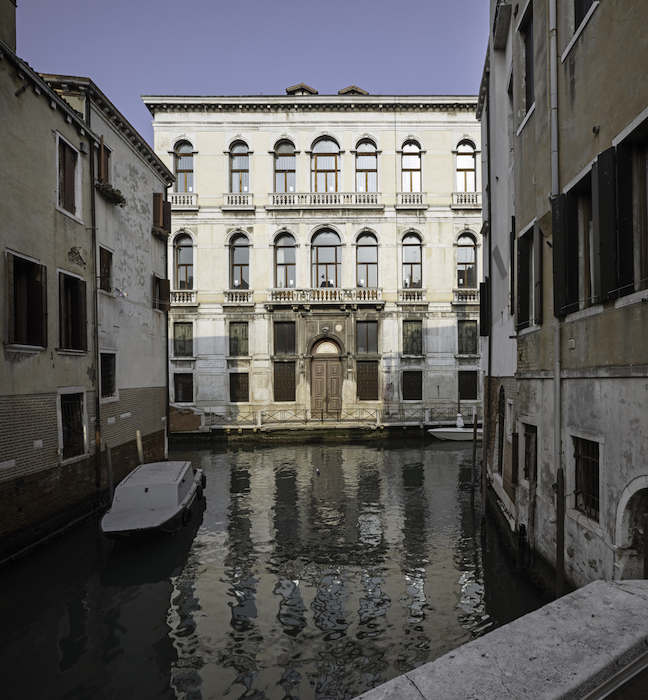 Palazzo Diedo, courtesy of the Berggruen Institute.
Palazzo Diedo, courtesy of the Berggruen Institute.
WW: What initially inspired you to explore Eastern perspectives?
NB: I was driven by sheer curiosity. From an early age, I was fortunate enough to travel extensively, exploring various cultures as soon as I had the opportunity. Spending time in almost every country has been a blessing. I have devoted significant time to East Asia and the Indian subcontinent. While my initial readings and intellectual pursuits were rooted in Western traditions, I soon discovered the wisdom and power of Eastern philosophies. Engaging with these perspectives has taught me a great deal and significantly enhanced the work we do at the institute. Frankly, it has been transformative.
“This synthesis of Western and non-Western thought has profoundly educated me, and I believe it can invigorate both traditions,”
Nicolas Berggruen
WW: What upcoming projects or ideas are you most excited about? How do you envision your work influencing future generations?
NB: I find excitement in everything we do—the more far-reaching, the more interesting. As I mentioned before, we work on democracy and capitalism, which are very present and important. However, understanding who we might become as humans with technologies that can self-transform our own nature is more philosophical and far-reaching.
This area is speculative and intellectually challenging, which makes it particularly fascinating. It allows us to engage with artists, philosophers, and science fiction writers in pure speculation—who do we want to be, where are we going, what can we be, what is the nature of certain things. These are timeless questions: the nature of consciousness, existence, and becoming. These questions were exciting a thousand years ago, three thousand years ago, and they remain exciting today. They will continue to captivate us as long as we remain curious beings, perpetually seeking to understand ourselves and our universe.
So, I am thrilled that the institute is enabling this kind of work. How can this be helpful to future generations? If we consider art, the ability to help create it is a gift to future generations. If we are on the cusp of new thinking and ideas, hopefully, that will also help energize, shape, or lead to discoveries that benefit those who come after us.
The institute’s mission, which involves creating space for ideas and innovation, acts as a catalyst for individuals to gravitate towards, express, and develop what they care about. By fostering this environment, we hope to inspire others to engage in similar endeavors. While we are not unique in that sense, our actions, which extend beyond supporting the projects and themes we champion, may encourage others to pursue their passions as well. In this way, we aspire to serve as an example for others.
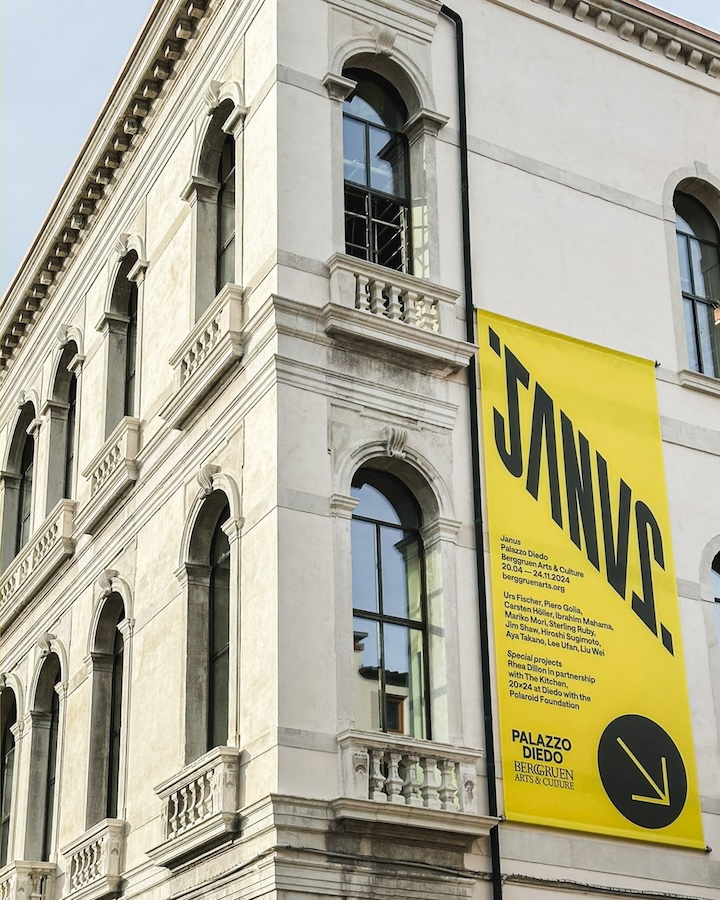 Palazzo Diedo, 2024. Photo: Massimo Pistore. Courtesy of Berggruen Arts & Culture.
Palazzo Diedo, 2024. Photo: Massimo Pistore. Courtesy of Berggruen Arts & Culture.







